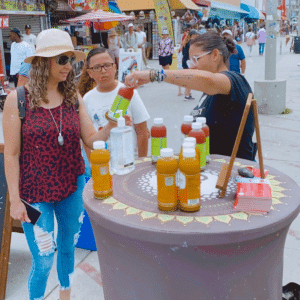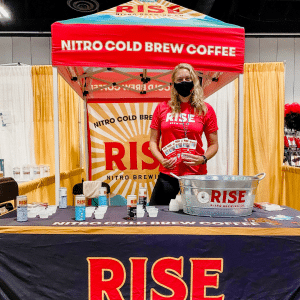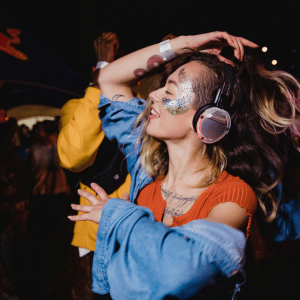
The question is: Are engagements the best measure of success? The answer is not always. As with most things in life, it’s a balance. On one extreme, having a huge experiential marketing buildout without a single consumer participating would not be considered a success. And a set-up swarming with consumers just walking through without speaking to anyone or reading anything would also be a bust.
The good news is that events almost never go to the extremes listed above. Most often, it’s a sliding scale, with one end focusing on a longer-format, memorable engagement and the other end focusing on more consumers and a shorter engagement. One is not better than the other, but they are very different and are best utilized in different settings. 
Longer format, memorable engagements are a great way to make an impression at a large event with dozens of brands vying for attention. If a consumer is willing to spend 5-30 minutes at your activation, they are very likely to remember it after the event is over. These types of engagements usually involve a more robust (and costly) set-up.
Some examples of longer format experiential marketing engagements are a test drive of a new vehicle, a make your own t-shirt station, or a silent disco. Each of these requires the participant to spend several minutes interacting with your brand. During this time, they are soaking in the way this experience makes them feel, consciously or unconsciously.
Shorter format engagements will allow you to connect with more consumers, but you will find that not as many will remember your brand after the activation is over. For brands with low brand awareness, this style of event works well for product sampling in lower intensity environment, such as retail demos, when the consumer can decide to make a purchase on-site. After the event, they still have the product at home to remember your brand.
Brands with higher brand awareness can use the shorter engagement in a higher traffic area as well. Since many people may already be fans, they will be building on their existing feeling of the brand, rather than having to build a new perception.
As you can see, there’s not a right or wrong here. Longer, more involved experiential marketing activations have a place, as do higher volume, shorter engagements. The question comes back to – what are your goals?
Sometimes customers come to us after they’ve already committed to sponsoring an event. In that case, we would plan out the activation based on the event they have selected. Other times, they come to us in the beginning stages, with goals like wanting to promote an innovation. Then, we dig deeper into what success looks like. Are we trying to drive consumers to key retailers? Are most of your shoppers purchasing your product online? These factors can make a very big difference on the strategy we choose.
Does your company have a preferred style of experiential marketing? Tell us about it in the comments!




